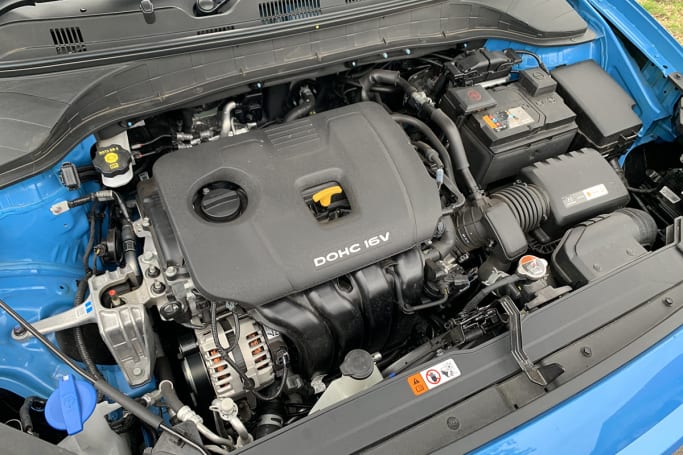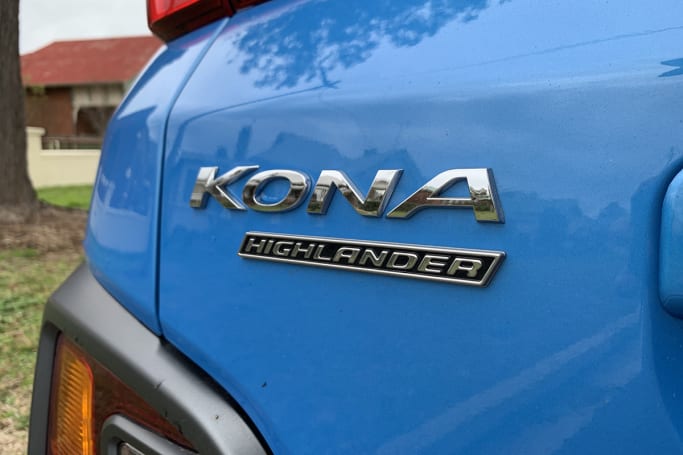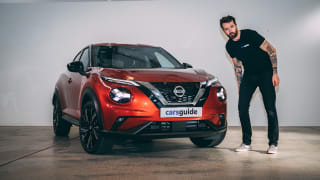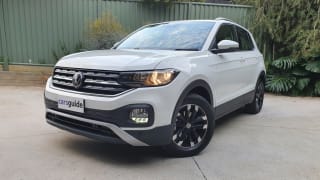My previous small SUV long-termer was the Honda HR-V RS, so stepping both up (in price) and down (in size) saw me take on the Hyundai Kona Highlander 2WD as my latest adopted automobile.
The Kona Highlander 2WD will join myself, my partner Gemma, and our two dogs Joey and Ziggy over the coming three months, with the intention of us getting to know the Kona better, seeing how it fits into our lifestyle, and making the most of its many features. As one of the most popular small SUVs on the market, we figured we should see what it's like to live with.
It is indeed feature-packed - the Highlander grade is the top-spec Kona model, with this 2WD version costing $36,660 plus on-road costs. That's a lot of money for a little car like this, and if you want to spend even more you can opt for the all-wheel drive model with a punchier turbo-petrol engine - for an additional $3540.
The Kona Highlander grade does justify its price with a lengthy equipment list, though. Standard on this car is 18-inch alloy wheels (with a space-saver spare), LED headlights, LED daytime running lights, halogen fog-lights, leather interior trim, heated and cooled electrically adjustable front seats, a sunroof, and a heated steering wheel (sooooo good on cold winter mornings).
The media system is an 8.0-inch unit with the smartphone mirroring tech you'd expect - Apple CarPlay and Android Auto - but there's only one USB port. There is, however, a Qi wireless phone charging pad, and there's built in sat nav if you prefer to do things the old fashioned way - plus the pop-up head-up display (HUD) tells you your speed, sat nav directions, and even has blind-spot monitoring alerts for both sides, so if you're in the middle lane of a freeway you don't need to be rubberneckin' to see what's around you.
I'll dwell more on how simple the media system is to use in the next update, and that's one of the key things with the Kona - everything is really well thought out, with the ergonomics of the cabin offering ease of use, and lots of adjustment for drivers who are taller (myself - 182cm/6'0") or shorter. I plan to get my 148cm (4'11") mum into the Kona for a drive at some stage, as it's on her potential new car shopping list.
There's something to that. Mum is looking to get a small SUV that is slightly more spacious than her current car (a Citroen DS3 D Sport - yes, my mum is pretty cool), and there are just so many small SUVs on the market that she literally texts me every week asking about another different one she's seen recently.
That's the thing - you need to do something to stand out from the crowd in this ever-growing segment. And we know there's an update coming for the Kona in 2021 which will not only improve the interior tech and safety equipment, but will also see the addition of the first ever Hyundai Kona N performance SUV. Maybe mum will want to wait for that one...
I mentioned safety tech, and the Highlander is well specced in that regard. It comes standard with auto emergency braking (AEB) and pedestrian detection, as well as lane keeping assistance (among the best this journo has ever experienced), lane departure warning, blind spot monitoring, rear cross-traffic alert, and a reversing camera. I know it's only a small vehicle, but newer offerings have 360 degree surround view camera systems, and that would actually be handy in the Kona because it has some rear blind spots when you're parking it.

Our first month with the Kona consisted of a trip from collection in Sydney over the Blue Mountains to Cowra. Then back to Sydney. Then to Cronulla, then back to the Blue Mountains. And after 1072km in the first month, the Kona has been a pretty decent companion.
Gemma drove it for one of those long stints, and she had a few positive findings - the seat heating, steering wheel warmer and multimedia simplicity were all worthy of big ticks for her. But she found the engine and transmission could rob you of momentum up hills - it hangs on to high gears before eventually downshifting and revving pretty hard - and the cruise control for her also had some tendency to misbehave, over/undershooting the set speed by as much as 10 per cent either way.
I noticed the same thing with the cruise control - and yeah, it's adaptive cruise, so I expected better. Plus I have to agree, the powertrain could be better. Maybe the extra money for the turbo version really is worth it. I would love to compare a turbo-DCT Kona the 2.0L 2WD model, and maybe that's something I will investigate further in coming updates.
You can also expect to see this exact car going up against a new small SUV rival soon. Stay tuned for that. And in the next update I'll tell you a bit about Hyundai Auto Link Premium, which is fitted to this model and basically allows you to use your smartphone as a remote control for some aspects of the car. More on that next month.
Oh, and if you're wondering how the Kona Active 2WD model (which is considerably more affordable) fared in our comparison test against the Honda HR-V and Mazda CX-3, you can check out our test here, and the video here.

Acquired: June 2020
Distance travelled this month: 1072km
Odometer: 8244km
Average fuel consumption for July: 7.3L/100km (measured at the pump)



































 Haval Jolion
Haval Jolion